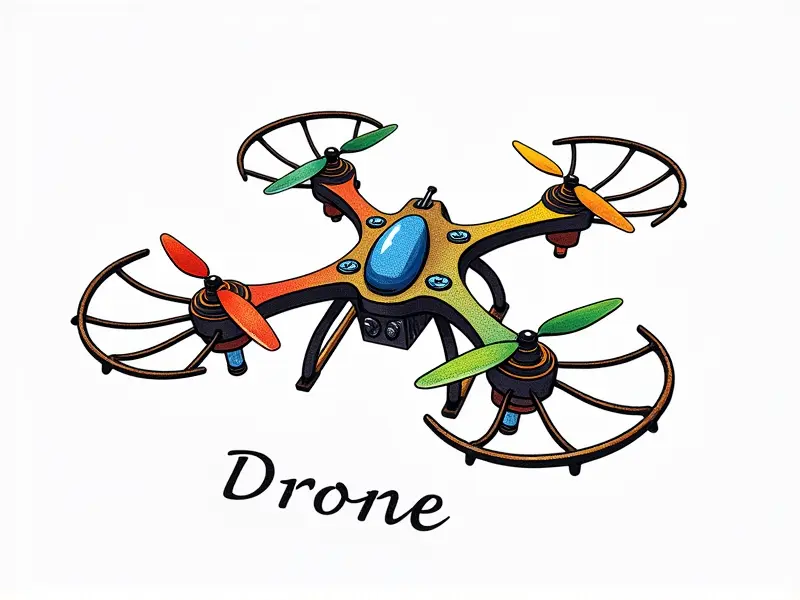RC airplane prop size guide

Choosing the Right Prop Size for RC Airplanes
Selecting the appropriate propeller size is crucial for achieving optimal performance in your remote-controlled (RC) aircraft. The right propeller can significantly enhance speed, lift, and efficiency, while an incorrect choice may lead to poor handling and reduced flight time.
Optimal Prop Sizes for Your RC Aircraft
The ideal propeller size varies depending on the type of RC plane you are flying. For instance:
- Fast and agile models: These aircraft typically benefit from smaller propellers, which reduce drag and increase top speed.
- Larger scale planes: Larger props can provide more thrust and better lift for heavy or high-wing load models.
Understanding RC Propeller Dimensions
An RC propeller is defined by two dimensions: diameter and pitch. The diameter refers to the overall size of the propeller, while the pitch describes how far it moves forward with each revolution. Common sizes range from 6x4 (diameter x pitch) up to 12x8.
Top Tips for Selecting RC Plane Props
- Consider Engine Type: Brushless motors generally require larger props compared to nitro engines due to their higher RPMs.
- Airframe Compatibility: Ensure the propeller fits your plane's cowling and does not interfere with moving parts like landing gear or control surfaces.
Quick Guide to RC Airplane Prop Dimensions
To determine the best prop size, consider these factors:
- Aircraft Weight: Heavier planes may need larger props for sufficient lift.
- Flying Conditions: Windy weather might necessitate a higher pitch to maintain altitude and stability.
Beginner's Guide to RC Airplane Propellers
New pilots should start with moderate-sized propellers that offer balanced performance. A 7x5 or 8x6 propeller is often suitable for most beginners' models, providing a good mix of speed and lift.
The Impact of Prop Size on RC Performance
A larger prop can increase thrust but may also lead to higher drag and reduced efficiency. Conversely, smaller props offer less resistance at the cost of lower overall power output.
Key Considerations
- Flight Duration: Smaller props generally extend battery life by reducing energy consumption.
- Traction and Control: Larger props provide better traction on grass or rough surfaces, enhancing takeoff performance.
Essential Prop Selection for RC Flyers
Finding the right propeller involves balancing several variables. Here’s a checklist to guide your selection process:
- Aircraft Specifications: Review your plane's manual or consult with experienced flyers.
- Propeller Materials: Carbon fiber is lighter and more durable than plastic, but it may be more expensive.
Mastering RC Plane Propeller Sizes
To master prop selection, understand that no single size fits all scenarios. Experiment with different combinations to find the optimal balance for your specific aircraft and flying conditions.
Advanced Tips
- Tuning Techniques: Fine-tune your setup by adjusting throttle curves or using specialized flight controllers.
- Testing Environments: Test in various conditions to understand how different props perform under varying wind speeds and temperatures.
Best Practices for RC Propeller Sizing
Adopting best practices ensures you get the most out of your propeller selection. Here are some recommendations:
- Regular Maintenance: Keep props clean and inspect them regularly for wear or damage.
- Storage Conditions: Store props in a cool, dry place away from direct sunlight to prevent degradation.
RC Prop Size Chart and Tips
Below is a general chart outlining propeller sizes suitable for various types of RC planes. Use this as a starting point before fine-tuning with actual testing:
| Type of Plane | Suggested Prop Size (Diameter x Pitch) |
|---|---|
| 3D Aerobatic Planes | 6x4, 7x5 |
| Racing Models | 8x6, 9x7 |
| Sport and Trainer Aircraft | 10x6, 10x8 |
| Larger Scale Planes | 12x7, 14x5 |
Note: These are general guidelines and may vary depending on specific aircraft designs and power systems.
Conclusion
Selecting the right propeller size for your RC airplane is essential for achieving optimal performance. By understanding key factors such as aircraft type, engine specifications, and flying conditions, you can make informed decisions that enhance flight stability, speed, and efficiency. Remember to experiment with different props and consult experienced flyers or manufacturer guidelines to find the best setup for your specific model.

